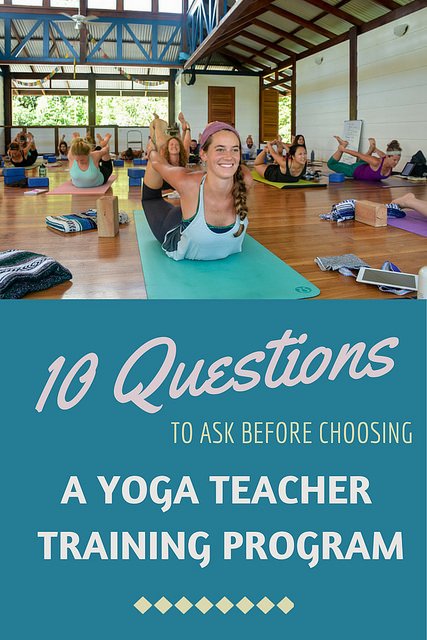Taking the leap and signing up for a yoga teacher training program is a huge time, money and life commitment. And with so many diverse trainings out there, how do you possibly know which one is right for you?
Stress no longer. We’ve put together a list of the top ten questions to ask yourself before signing up for a yoga teacher training. Take the time to research and reflect upon the answers, and we guarantee you’ll find the program that’s meant for you!
Questions To Ask Yourself Before Signing Up For A Yoga Teacher Training
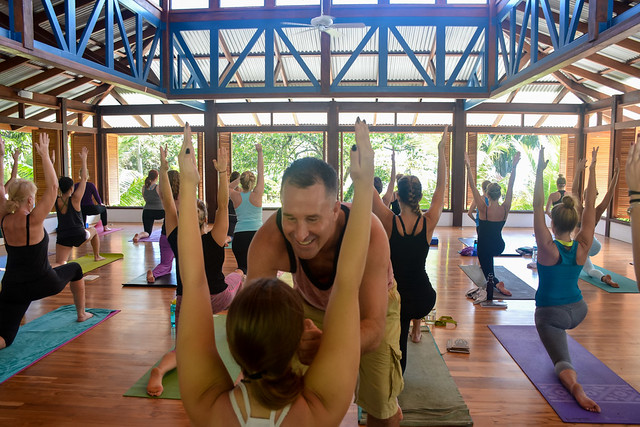
1. Who is the yoga teacher?
One of the most important considerations for a yoga teacher training program is the instructor who will be leading you on your yoga journey. Even if the retreat center or the location sounds absolutely idyllic, take a moment to thoroughly learn about the instructor. What style of yoga do they teach? What is their personal philosophy? Why are they even teaching? Do these things resonate with you? Remember that not all yoga teachers are created equally; the unfortunate truth is that some are only in it for the money. Alternatively, there are some absolutely amazing yoga teachers out there that just aren’t meant to be your teacher.
2. What is your yoga philosophy?
Why is it that you are practicing yoga? What is your yoga style? What are your values? It is very likely that these things can change with time; after all, your yoga practice is a fluid journey. However, it won’t do any good if you sign up for a Bikram yoga teacher training if you already know you are more interested in teaching Iyengar style classes. Take some time for self-reflection to know what it is you are hoping to gain from your yoga teacher training program, and then find a teacher who aligns with that mission.
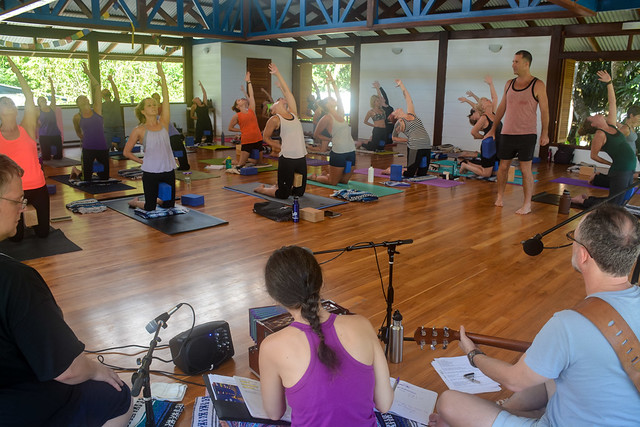
3. How do you best learn?
There are numerous ways to become a yoga teacher, but two of the most common include: a one-month yoga teacher training immersion and a course that meets on the weekends for around six months. Before you sign up for one or the other, consider how it is you best learn. Maybe going to an exotic country like Costa Rica for an entire month sounds amazing, but you know that you prefer to process information for long periods of time in between classes. Alternatively, a six-month course might be more convenient, but maybe you know that your outside life and responsibilities will get in the way or prove too distracting.
4. What is your intention?
Why is it you are signing up for a yoga teacher training program? Do you know that you want to be a yoga teacher? Or do you primarily want to learn more about yoga to deepen your own personal practice? Again, these answers can change before, during and after the program. But if you know you are only taking the course to deepen your own practice, then perhaps an immersion program with a focus on meditation and self-reflection will better serve your needs than a course primarily focusing on sequencing.
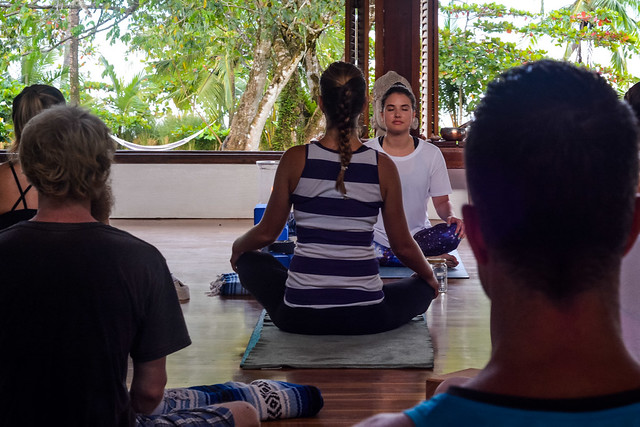
5. What is the program curriculum?
Look at the sample itinerary and the curriculum to be sure that all of the material you want is covered. Will you actually get teaching experience included with the course? Will you study Ayurvedic health? Will there be mantras and chanting? Is there a reading list required, and if so, what are the books? Familiarize yourself with the content of the course, and then refer back to your intention and yoga philosophy to make sure it aligns.
6. How is your emotional and physical health?
A yoga teacher training course is physically and emotionally demanding. A lot of “stuff” that you’ve buried inside is likely to rise to the surface. Are you ready to deal with any emotions you might have subconsciously suppressed? Are you ready to spend all day, every day immersed in yoga? You don’t have to be a “super yogi” in order to sign up for a yoga teacher training. In fact, there is no such thing as being “good” enough. But do make sure you are prepared for physical and emotional challenges.
7. What time and money requirements are there?
Some yoga teacher training programs advertise one price, only to add on a surplus of fees and extras. Before you commit, be sure you know absolutely everything that you need to purchase. Similarly, ask if there are outside time commitments, such as teaching sample classes or reading certain books.
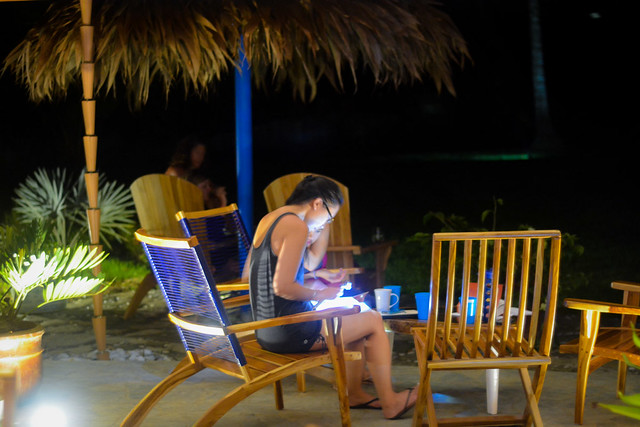
8. Who do recent graduates say?
One of the best places to look for advice about a yoga teacher training program is from the other students who have gone before you! Don’t be shy to reach out privately to past students and ask for their first-hand experience. You’ll likely find that everyone has a different experience, and all of this information can be highly valuable in deciding if the program is right for you or not.
9. Is it certified with the Yoga Alliance?
Many yoga studios and retreat centers will only hire those yoga teachers who receive their qualifications from a Yoga Alliance Certified program. If the program is not certified with the Yoga Alliance, it is worth inquiring as to why not. Ultimately if you find the teacher, the style and the curriculum still align with your philosophy and values, consider still participating in the program.
10. What does your intuition say?
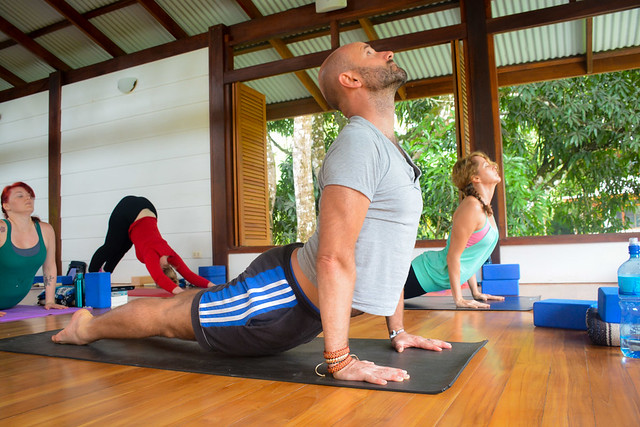
At the end of the day, what does your intuition say? Your intuition is smarter than rationalization; it knows exactly where you should be and when you should be there. Take the time to get still and steady, and sit with the decision of a yoga teacher training before you commit. Stop talking and start listening. You might be surprised what you hear!
If you’re looking for a 30-day yoga teacher training immersion program in Costa Rica, consider if the Blue Osa training is right for you!
Have you taken a yoga teacher training program? What do you wish you would have known prior to signing up?
 About the author:
About the author:
Casey Siemasko is a content marketing consultant, travel blogger and wandering yogi. An entrepreneur at heart, she is the co-founder of the award-winning travel blog A Cruising Couple.


